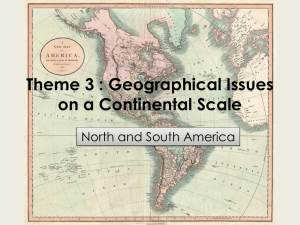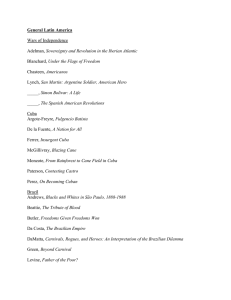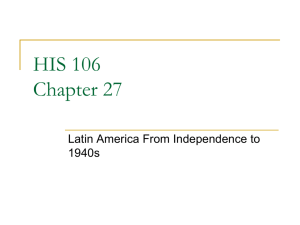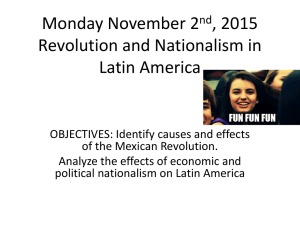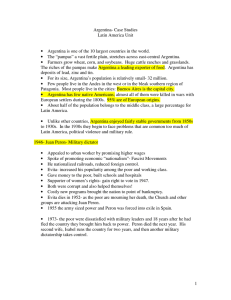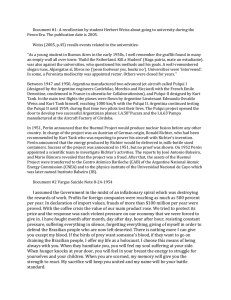HERE.
advertisement
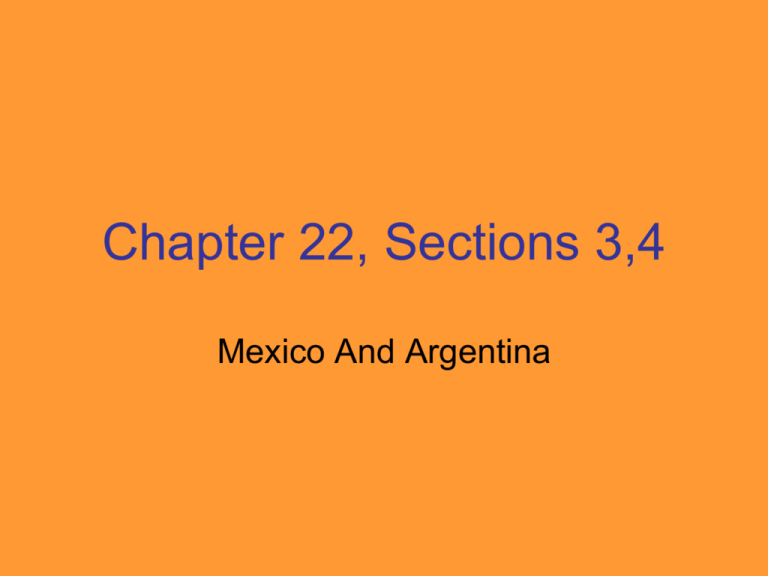
Chapter 22, Sections 3,4 Mexico And Argentina From 1876-1911, caudilllo Porfirio Diaz was the dictator. He invited foreigners to invest. He was bent on modernization. They built railroads, developed mines, and bought land. In 1910, peasants, workers and members of the middle class overthrew Diaz. There was 11 years of fighting and 1 million died. • In 1917, there was a new constitution which gave land to peasants, protected rights of workers and limited the Catholic Church’s power. The Institutional Revolutionary Party (PRI) dominated from 1929-2000. They were inclusive, but used fraud and violence to stay in power. In 2000 the party lost the presidency. Vincente Fox Quesada was elected from the National Action Party. The government encourages commercial farming with irrigation projects in the South. Many foreign companies set up there, using machinery to produce tomatoes and fruits for export to the US. Now Mexico must import food. Mexico is the world’s fourth-largest oil-producer. When the 70s boom hit, Mexico spent billions on development. In the 80s, oil prices plunged, interest rates soared, and Mexico went into debt. They had to cut education and health care spending and sell off state-run industries. Mexico, Canada and the US signed the North American Free Trade Agreement (NAFTA) in 1993, which set up a common market, and ended tariffs. Argentina is one of the ten largest nations (in area) on earth. A vast fertile plain called the Pampas stretches across east-central Argentina. Farmers grow wheat, corn and sorghum, and huge ranches (estancias) are scattered there. This makes the nation a leading exporter of food. In 1946 Colonel Juan Peron was elected president. He promised higher wages and economic nationalism. His wife Eva Peron used threats to get donations from the rich. She gave it to the poor or used it to build hospitals (and to enrich herself). Economic crises occurred in the 80’s, 90’s, and in 2001. Argentina faced huge foreign debt. The government froze wages and prices and laid off thousands of workers. It sold off national airline, railroad, and telephone companies.




